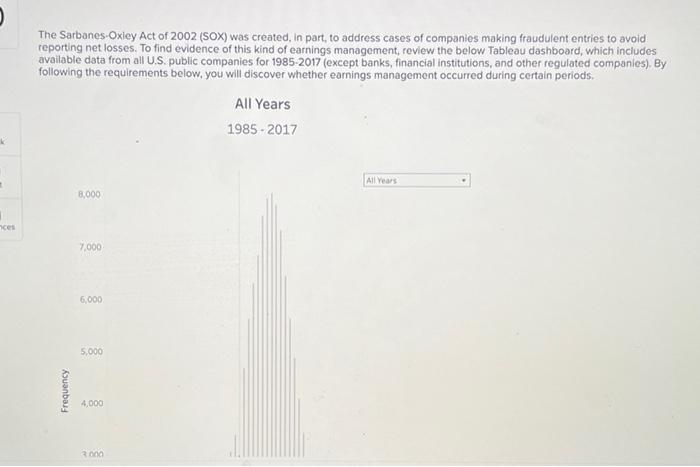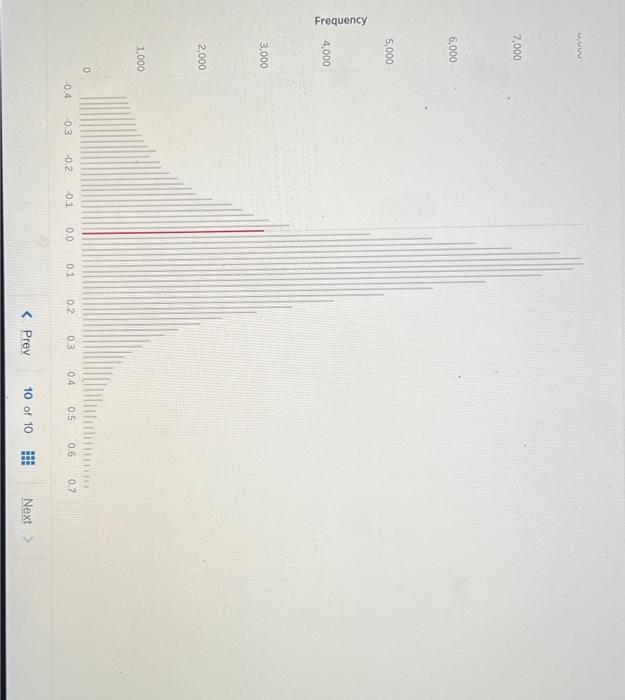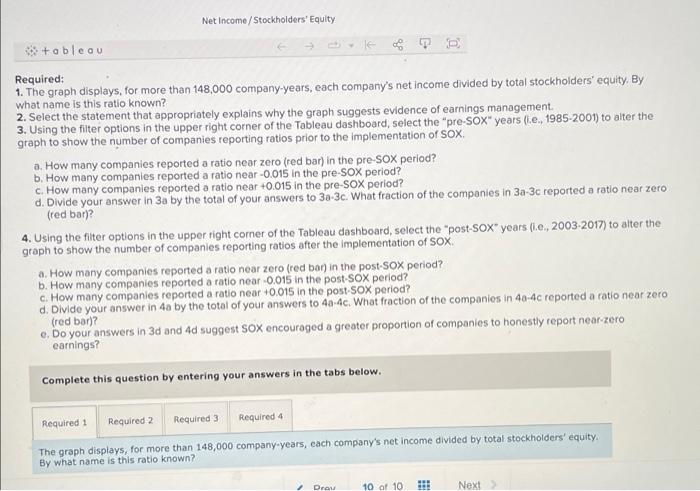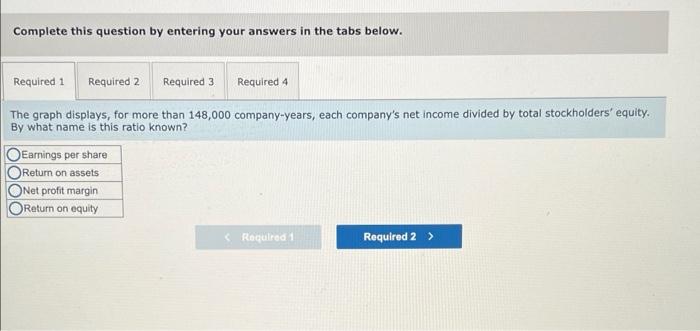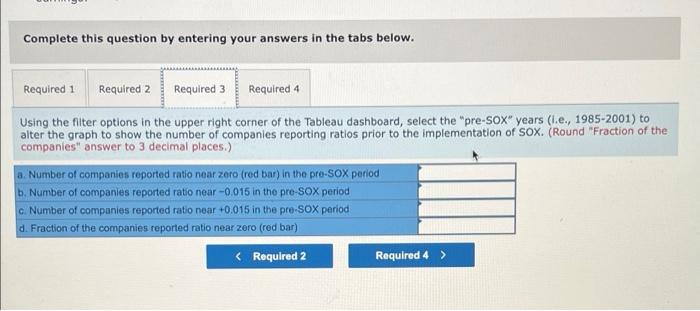The Sarbanes-Oxley Act of 2002 (SOX) was created, in part, to address cases of companies making fraudulent entries to avoid reporting net losses. To find evidence of this kind of earnings management, review the below Tableau dashboard, which includes available data from all U.S. public companies for 1985-2017 (except banks, financial institutions, and other regulated companies). By following the requirements below, you will discover whether earnings management occurred during certain periods. All Years 1985-2017 All Years t 8,000 ces 7,000 6,000 5,000 4,000 3.000 Frequency Frequency u,www 7,000 6,000 5,000 4,000 3,000 2,000 1,000 -0.3 -0.2 -0.1 0.0 0.1 0.2 0.3 0.4 Net Income/Stockholders' Equity +ableau Required: 1. The graph displays, for more than 148,000 company-years, each company's net income divided by total stockholders' equity. By what name is this ratio known? 2. Select the statement that appropriately explains why the graph suggests evidence of earnings management. 3. Using the filter options in the upper right corner of the Tableau dashboard, select the "pre-SOX" years (ie., 1985-2001) to alter the graph to show the number of companies reporting ratios prior to the implementation of SOX. a. How many companies reported a ratio near zero (red bar) in the pre-SOX period? b. How many companies reported a ratio near-0.015 in the pre-SOX period? c. How many companies reported a ratio near +0.015 in the pre-SOX period? d. Divide your answer in 3a by the total of your answers to 3a-3c. What fraction of the companies in 3a-3c reported a ratio near zero (red bar)? 4. Using the filter options in the upper right corner of the Tableau dashboard, select the "post-SOX" years (i.e., 2003-2017) to alter the graph to show the number of companies reporting ratios after the implementation of SOX. a. How many companies reported a ratio near zero (red bar) in the post-SOX period? b. How many companies reported a ratio near -0.015 in the post-SOX period? c. How many companies reported a ratio near +0.015 in the post-SOX period? d. Divide your answer in 4a by the total of your answers to 4a-4c. What fraction of the companies in 4a-4c reported a ratio near zero (red bar)? e. Do your answers in 3d and 4d suggest SOX encouraged a greater proportion of companies to honestly report near-zero earnings? Complete this question by entering your answers in the tabs below. Required 1 Required 2 Required 3 Required 4 The graph displays, for more than 148,000 company-years, each company's net income divided by total stockholders' equity. By what name is this ratio known? " Drau 10 of 10 Next Complete this question by entering your answers in the tabs below. Required 1 Required 2 Required 3 Required 4 The graph displays, for more than 148,000 company-years, each company's net income divided by total stockholders' equity. By what name is this ratio known? Earnings per share Return on assets Net profit margin Return on equity Complete this question by entering your answers in the tabs below. Required 1 Required 2 Required 3 Required 4 Select the statement that appropriately explains why the graph suggests evidence of earnings management. OThe number of companies reporting a ratio near zero (red bar) is smaller than expected, given the number of companies reporting slightly more negative (-0.015) and slightly more positive (0.015) ratios. OThe total number of companies reporting a positive ratio is greater than the total number of companies reporting a negative ratio. The total number of companies reporting a negative ratio is greater than the total number of companies reporting a positive ratio. None of the above. Complete this question by entering your answers in the tabs below. Required 1 Required 2 Required 3 Required 4 Using the filter options in the upper right corner of the Tableau dashboard, select the "pre-SOX" years (i.e., 1985-2001) to alter the graph to show the number of companies reporting ratios prior to the implementation of SOX. (Round "Fraction of the companies" answer to 3 decimal places.) a. Number of companies reported ratio near zero (red bar) in the pre-SOX period b. Number of companies reported ratio near -0.015 in the pre-SOX period c. Number of companies reported ratio near +0.015 in the pre-SOX period d. Fraction of the companies reported ratio near zero (red bar) Complete this question by entering your answers in the tabs below. Required 1 Required 2 Required 3 Required 4 Using the filter options in the upper right corner of the Tableau dashboard, select the "post-SOX" years (I.e., 2003-2017) to alter the graph to show the number of companies reporting ratios after the implementation of SOX. (Round "Fraction of the companies" answer to 3 decimal places.) a. Number of companies reported ratio near zero (red bar) in the post-SOX period. b. Number of companies reported ratio near -0.015 in the post-SOX period. c. Number of companies reported ratio near +0.015 in the post-SOX period. d. Fraction of the companies reported ratio near zero (red bar) Do your answers in 3d and 4d suggest SOX encouraged a greater proportion of companies to honestly report near-zero earnings?
